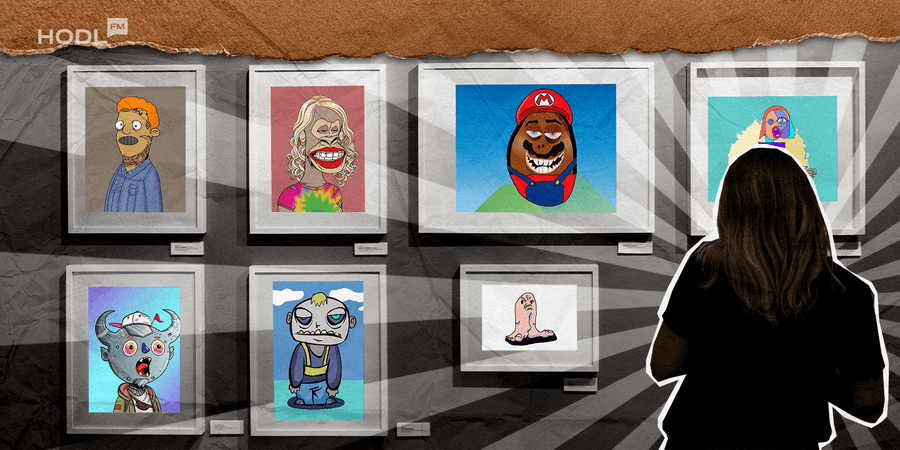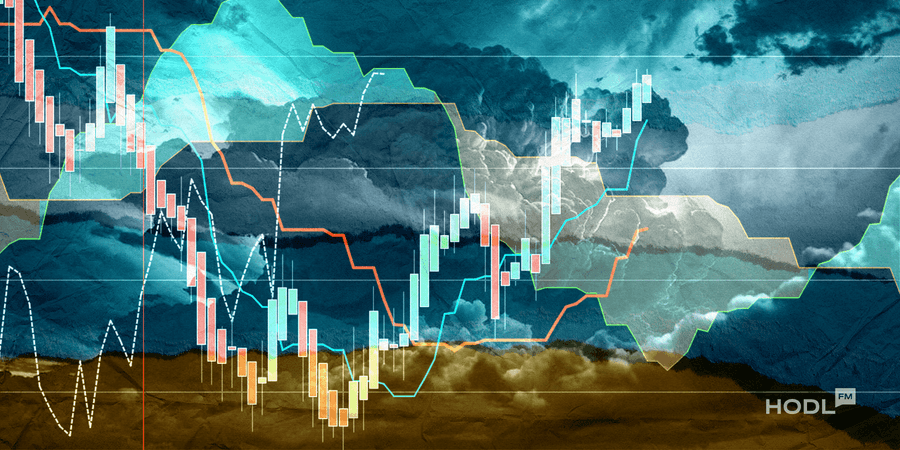The non-fungible token (NFT) market has seen a sharp contraction, losing almost half its value over the past month even as trading activity picked up in October.
According to CoinGecko, global NFT market capitalization fell from roughly $6.6 billion on October 5 to $3.5 billion by November 5, marking a 45% decline in 30 days. This slump occurred despite a rise in overall sales volume, which briefly supported blue-chip floor prices.
Data from CryptoSlam shows that NFTs recorded total sales of about $631 million in October, up 13% from September’s $556 million. Certain collections, such as those on Bitcoin and Base, saw modest gains of 9% and 24%, respectively.
In contrast, BNB Chain and Polygon suffered the steepest losses, with market values falling 82% and 86%, while Ethereum, Solana, Immutable, and Avalanche declined between 25% and 35%.

Blue-chip collections show high volatility
Even well-established collections were affected by the correction. NFT Price Floor data highlights notable declines in trading volume and floor prices among top collections:
- CryptoPunks: floor price dropped from $214,000 to $117,000; trading volume fell 40%.
- Moonbirds: floor price fell from $14,700 to $6,500; trading volume declined 63%.
- Bored Ape Yacht Club (BAYC): floor price fell from $36,700 to $19,500, despite a 30% increase in volume.
- Pudgy Penguins: floor price dropped from $43,000 to $18,340, with an 83% increase in trading volume.
Some disconnect between trading activity and valuations is present and reflecting how liquidity in the NFT market remains speculative and highly sensitive to broader crypto sentiment.
Major players pivot while NFT markets cool
While secondary NFT markets contract, leading platforms are diversifying. OpenSea, which recorded over 522,000 active traders in the past 30 days, is expanding into a universal on-chain trading hub. The company emphasized that it remains committed to NFTs, despite broadening its market focus.
Similarly, Animoca Brands announced plans to list on Nasdaq, signaling growing recognition of Web3 gaming and metaverse companies by traditional capital markets, even as NFT valuations face pressure.
Recent data indicate that NFT market activity is becoming more fragmented. While some blue-chip collections and Layer‑1 networks see increased trading volume, participation across smaller or mid-tier projects has been uneven. Mixed engagement reflects both speculative behavior and selective interest, with investors prioritizing recognized brands or projects tied to gaming and Web3 utility.
Analysts note that the NFT ecosystem is evolving beyond speculative trading. Data from 99Firms and Precedence Research estimate that the global NFT market could reach roughly $48.7 billion in 2025, with projections rising to $703 billion by 2034, reflecting a CAGR of over 30%.
NFT marketplaces alone are expected to expand from $48.7 billion to nearly $247 billion by 2029, driven by cross-chain interoperability, integration with gaming and metaverse applications, and increased institutional participation.

This context suggests that the recent market pullback may be less a sign of stagnation and more a recalibration. NFT ownership is also becoming more accessible through mechanisms like NFT fragmentation, which allows high-value tokens to be split into smaller, tradable shares using smart contracts.

Disclaimer: All materials on this site are for informational purposes only. None of the material should be interpreted as investment advice. Please note that despite the nature of much of the material created and hosted on this website, HODL FM is not a financial reference resource, and the opinions of authors and other contributors are their own and should not be taken as financial advice. If you require advice. HODL FM strongly recommends contacting a qualified industry professional.




